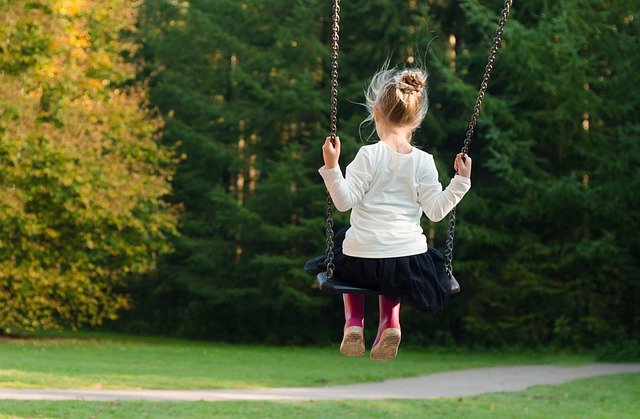For many of us, public playgrounds have always been around. Whether at schools, neighborhood parks, churches, or daycares, they’re quite a familiar sight. Of course, just like pretty much every other human invention, playgrounds have changed significantly in appearance over the years. Modern play spaces look vastly different from the first public playgrounds of the 19th century. From goat carts to giant strides, keep reading to learn how these places of play evolved into what we understand them as today.
The Precursor to Playgrounds
As with much of known history, there are some differing opinions on what could have been labeled as public playgrounds. For example, the first “outdoor gymnasium” was founded in 1821 at the Salem, Massachusetts Latin School. This play space had parallel bars and a vaulting/pommel horse — a far stretch from a modern playground. However, this isn’t widely considered the first public playground by historians, especially because it didn’t catch on for many years.
What is largely accepted as the true precursors to the playground were known as “sand gardens.” These were what you can probably imagine from the name — big boxes of sand. Picture a giant sandbox, and you’ll be correct. Since these were sectioned-off play spaces for children, they’re universally considered the predecessor to playgrounds. The first known sand garden appeared in Germany in the early 1880’s, with America’s first popping up around 1886 in Boston.
Sandboxes are still a somewhat common sight in the 21st century, although not usually in public playgrounds compared to private. These are more often seen in individual’s backyards instead, but they demonstrate the lasting effects of the first children’s play apparatuses.
The First Real Playground
The Industrial Revolution of the late 1800’s brought a new fervor to provide children with spaces to play within crowded cities. This was especially strong once child labor laws were enacted, allowing fewer children to work long hours in factories. Now able to really be children and play, public parks with playground equipment took shape across the nation, starting in San Francisco.
The bay city claims its Golden Gate Park as America’s first public children’s playground, founded in 1887. Funded by a private donation, this space was furnished with gondola swings, a carousel, seesaw, maypole, and slide. Additionally, goat-cart and donkey rides were offered. While the animal attractions certainly were enjoyed, the use of them in playgrounds dwindled in the 20th century. These are now often reserved for children’s farms and other nature-related play places.
The Model Playground Appears
Along came the turn of the century in 1900, and with it materialized the foundations of standardized playground equipment. People had new, more innovative ideas for the structures children could play on. For example, steel became the go-to material to build many of these pieces to make them sturdier. Older inventions, like slides and swings, adopted steel frames, and new equipment was designed.
One of the most popular playground pieces of the early 20th century was called the “giant stride.” This consisted of a tall steel pole that had either ropes or metal chains hanging down from the top. Children were to hold onto these and take running steps and leaps that would send them into the air. This is why it was named giant stride, because those playing were able to take giant steps and jumps.
Unfortunately, these contraptions proved to be very dangerous and often resulted in injury. Being sent flying through the air could result in falls. The many ropes allowed several children to use the giant stride at once, resulting in collisions. Moreover, if one child jumped off while taking their giant stride, their steel chain could hit another child. Serious injuries and even death were the adverse consequences, although the device wasn’t banned until the 1970’s.
The Switch to Imaginative Spaces
As post-World War II America settled back into normalcy, a new focus for children’s play places appeared — the imaginative playground. Steel was still largely used to construct equipment, but the focal point turned to creative usage. In other words, designers began creating structures that didn’t have just one way to use them. Additionally, there arose themes in playgrounds like space travel, animals, and shapes.
The setting of these playgrounds looks very similar to today’s: what started as individual structures were combined. For example, slides and climbing walls were no longer separate pieces of equipment. A child could climb up some stairs, crawl through a tunnel, and go down a slide without walking across the ground. This way, multiple kids could use the structure at once, and maybe even for different uses.
The Focus on Safety
As briefly mentioned when talking about the giant stride, the 1970s rolled around with an emphasis on children’s safety in play spaces. Steel was shunned and replaced by plastic, with these structures usually having rounded edges. These not only were a softer material but also didn’t hold heat like metal does, therefore lessening burns.
This focus on safety unfortunately limited the imaginative atmosphere that had previously dominated playgrounds. Designers were so caught up in trying to satisfy new regulations that they forwent themes. Safety is definitely a priority, but the scenery wasn’t quite as fun or inviting as before.
Into the Present
Starting in the 1980’s into present time, a combination of safety and imagination has taken over playground equipment. Modern designers recognize the need for children to let their creativity pique during playtime while doing so in a safe environment. Themes have returned, and so has the variety of ways to use the equipment. Additionally, playgrounds are no longer just about running around, but also about learning and the improvement of cognitive abilities. Now that you know the history, take your child to a playground so you both can appreciate these structures!


